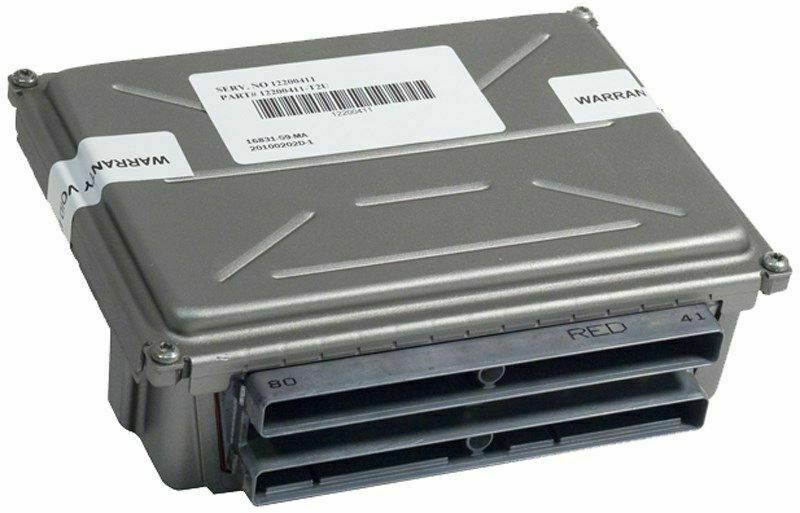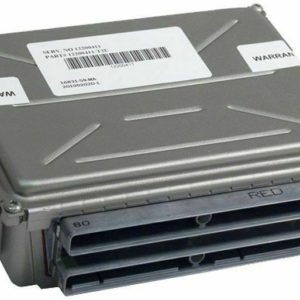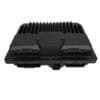Restore Your GM’s Performance and Reliability
Is your 1999-2000 Pontiac Bonneville or other GM vehicle running poorly? Dealing with a persistent Check Engine Light, stalling, or erratic engine behavior can be incredibly frustrating. The Powertrain Control Module (PCM) is the brain of your vehicle’s engine management system, and when it fails, it can cause a wide range of confusing and debilitating issues. This isn’t just an inconvenience; it’s a problem that affects your car’s reliability and your peace of mind. As a technician with over two decades of experience, I’ve seen firsthand how a faulty PCM can sideline an otherwise perfectly good car. This replacement PCM, part number 09361735, is the direct solution to get your vehicle running smoothly again.
We take the guesswork and high costs out of the repair. Unlike a generic part from a junkyard, we professionally program this module to your vehicle’s specific Vehicle Identification Number (VIN) before it ships. This means it arrives loaded with the latest GM software updates, addressing potential factory bugs and ensuring optimal performance. This crucial step eliminates the need for an expensive trip to the dealership for programming, making it a straightforward fix for both seasoned mechanics and determined DIYers.
Common Signs of a Failing PCM
If your vehicle is experiencing any of the following symptoms, a failing PCM could be the culprit. I’ve diagnosed hundreds of these, and the patterns are often clear. Look out for:
- ✔ Persistent Check Engine Light with codes like P0601, P0605, or P0606 (Internal Control Module Errors).
- ✔ Engine stalling, sputtering, or refusing to start.
- ✔ Unexplained drop in fuel economy.
- ✔ Harsh or erratic automatic transmission shifting.
- ✔ Communication errors with diagnostic scan tools.
- ✔ Intermittent issues that seem to have no other logical cause.
From the Diagnostic Bay
I remember a 2000 Pontiac Grand Prix that came into my shop with a maddening intermittent no-start condition. The owner had already replaced the battery, alternator, and starter. A basic scan tool showed no codes. However, when I connected my professional diagnostic equipment, I noticed the PCM would randomly drop communication. After confirming all power and ground circuits to the module were solid, I knew the PCM itself was failing internally. We sourced a quality used module, flashed it to the car’s VIN, and installed it. The car started every time afterward. It’s a classic case where the problem isn’t mechanical, but electronic, and this 1999-2000 Bonneville PCM is the exact type of fix for those hard-to-trace electrical gremlins.
A Straightforward Guide to Installation
Installing your pre-programmed PCM is a manageable job for most DIY enthusiasts. Following these steps will ensure a safe and successful replacement.
- Safety First: Always disconnect the negative terminal from your vehicle’s battery and secure it away from the post to prevent any accidental electrical contact.
- Locate the PCM: On most compatible vehicles, the PCM is located in the engine compartment, typically on the driver’s side inside the air filter box housing. Consult a repair manual for your specific model if you’re unsure.
- Disconnect Connectors: Carefully unclip and remove the electrical wiring harness connectors from the old PCM. These connectors have locking tabs that need to be released before they can be pulled free. Avoid forcing them.
- Remove the Old Module: Unbolt the old PCM from its mounting bracket. Keep the hardware, as you may need it for the new module.
- Install the New PCM: Mount your new, pre-programmed PCM securely in place. Reconnect the wiring harness connectors, ensuring they click firmly into place.
- Reconnect the Battery: Reattach the negative battery terminal. Your vehicle may need to complete a security relearn procedure, which typically involves turning the key to the ‘ON’ position for 10-15 minutes. Check your owner’s manual for specific instructions.
Verified Vehicle Compatibility
This module is a guaranteed fit for a wide range of GM vehicles. Please verify your model and options below. This part is a direct replacement for modules with service number 09361735.
- BONNEVILLE: 1999 (LH engine compartment), 2000 (3.8L, VIN K, LH engine compartment)
- CENTURY: 1999 (LH engine compartment)
- CUTLASS: 1999 (LH center dash, ID 9361735)
- EIGHTY EIGHT: 1999 (LH engine compartment)
- GRAND PRIX: 1999 (LH engine compartment), 2000 (3.8L, w/supercharged option)
- IMPALA: 2000 (3.4L or 3.8L, LH engine compartment)
- INTRIGUE: 1999 (LH engine compartment)
- LESABRE: 1999-2000 (LH front engine compartment)
- LUMINA CAR: 1999 (LH engine compartment)
- MALIBU: 1999 (3.1L, LH dash)
- MONTE CARLO: 1999-2000 (LH engine compartment)
- MONTANA: 1999 (LH engine compartment)
- PARK AVENUE: 1999 (LH front engine compartment)
- REGAL: 1999 (LH engine compartment)
- RIVIERA: 1999 (RH dash)
- SILHOUETTE: 1999 (LH engine compartment)
- TRANS SPORT: 1999 (Canada, LH front engine compartment)
- VENTURE: 1999 (LH engine compartment)
Frequently Asked Questions
Why do you need my VIN?
Your Vehicle Identification Number (VIN) contains critical information about your car’s specific options, engine, and transmission. We use the VIN to program the PCM with the correct GM factory software and the latest updates, ensuring it communicates perfectly with your vehicle’s other systems.
Is this part new?
No, this is a high-quality, factory original (OEM) part that has been carefully sourced from a salvaged vehicle. Each unit is inspected and tested to ensure it is fully functional before being programmed and shipped.
Will I need to do anything after installation?
Because the module comes pre-programmed, no dealer visit is required. However, some GM vehicles may require a simple security relearn or crankshaft position sensor variation relearn procedure after installation. These can often be done without special tools, and instructions are widely available online or in service manuals.
Is this a plug-and-play solution?
Yes, for the most part. Once we program it to your VIN, the software side is handled. You simply need to physically install it. In some cases, a security relearn (as mentioned above) is the final step, but no additional programming is needed.



